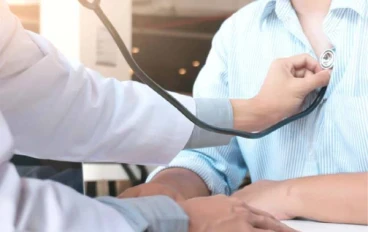
Prostate Cancer: A Comprehensive Guide
Prostate Cancer: A Comprehensive Guide
Prostate Cancer: A Silent Threat to Men's Health
Prostate cancer is one of the most common cancers among men, affecting millions worldwide. It arises from the uncontrolled growth of cells in the prostate gland, a small, walnut-shaped organ located below the bladder. While prostate cancer often progresses slowly, it can be aggressive and spread to other parts of the body if left untreated
Understanding the Prostate Gland and Its Role
The prostate gland plays a crucial role in the male reproductive system. It produces seminal fluid, a fluid that helps transport sperm during ejaculation. The prostate gland also surrounds part of the urethra, the tube that carries urine from the bladder to the penis
Risk Factors for Prostate Cancer
While the exact cause of prostate cancer remains unknown, several factors can increase a man's risk of developing the disease
Age: The risk of prostate cancer increases significantly with age. Most cases are diagnosed in men over 65
Family history: Having a father or brother with prostate cancer increases a man's risk
Ethnicity: Men of African descent are more likely to develop prostate cancer than men of other ethnicities
Genetic factors: Certain gene mutations can increase the risk of prostate cancer
Lifestyle factors: Some studies suggest that a diet high in red meat and processed meats may increase prostate cancer risk, while physical activity may reduce it
Symptoms of Prostate Cancer
In its early stages, prostate cancer often produces no noticeable symptoms. However, as the cancer progresses, men may experience
Difficulty urinating: This may include a frequent urge to urinate, a weak urine stream, or dribbling
Painful urination or blood in the urine: This can be caused by the cancer obstructing the urethra
Pain in the lower back, hips, or bones: This can occur if the cancer spreads to the bones
Erectile dysfunction: Prostate cancer can sometimes interfere with the nerves that control erections
Screening and Diagnosis of Prostate Cancer
Early detection of prostate cancer is crucial for successful treatment. Two primary screening methods are available
Digital rectal exam (DRE): During a DRE, the doctor inserts a gloved finger into the rectum to feel for abnormalities in the prostate gland
Prostate-specific antigen (PSA) test: This blood test measures the level of PSA, a protein produced by the prostate gland. Elevated PSA levels may indicate prostate cancer, but further testing is needed for confirmation.
Treatment Options for Prostate Cancer
The treatment approach for prostate cancer depends on various factors, including the stage, grade, and overall health of the patient. Common treatment options include:
Active surveillance: For low-risk cancers, doctors may recommend active surveillance, which involves regular monitoring of the cancer with PSA tests and DREs.
Surgery: Radical prostatectomy involves removing the entire prostate gland. This is an effective treatment for localized prostate cancer
Radiation therapy: Radiation therapy uses high-energy beams to destroy cancer cells. It can be used as primary treatment or after surgery
Hormone therapy: This treatment aims to lower testosterone levels, which can slow or stop the growth of prostate cancer
Cryotherapy: This procedure freezes and destroys prostate cancer cells
Chemotherapy: Chemotherapy uses drugs to kill cancer cells throughout the body. It is typically used for advanced prostate cancer
Living with Prostate Cancer
Even after treatment, men with prostate cancer may need ongoing monitoring and management. Side effects from treatment, such as urinary incontinence or erectile dysfunction, may also require attention. Support groups and counseling can provide emotional support and help men cope with the challenges of living with prostate cancer
Prevention Strategies for Prostate Cancer
While there is no sure way to prevent prostate cancer, certain lifestyle changes may reduce the risk
Maintaining a healthy weight: Obesity is associated with an increased risk of prostate cancer
Eating a healthy diet: A diet rich in fruits, vegetables, and whole grains may help reduce prostate cancer risk
Limiting red meat and processed meat intake: Studies suggest that a high intake of these foods may increase prostate cancer risk
Regular exercise: Physical activity may lower the risk of prostate cancer
Quitting smoking: Smoking has been linked to an increased risk of prostate cancer
Prostate Cancer: A Call to Action
Prostate cancer is a serious disease, but it is not invincible. With early detection, appropriate treatment, and lifestyle modifications, men can significantly improve their chances of overcoming prostate cancer and living long, healthy lives































